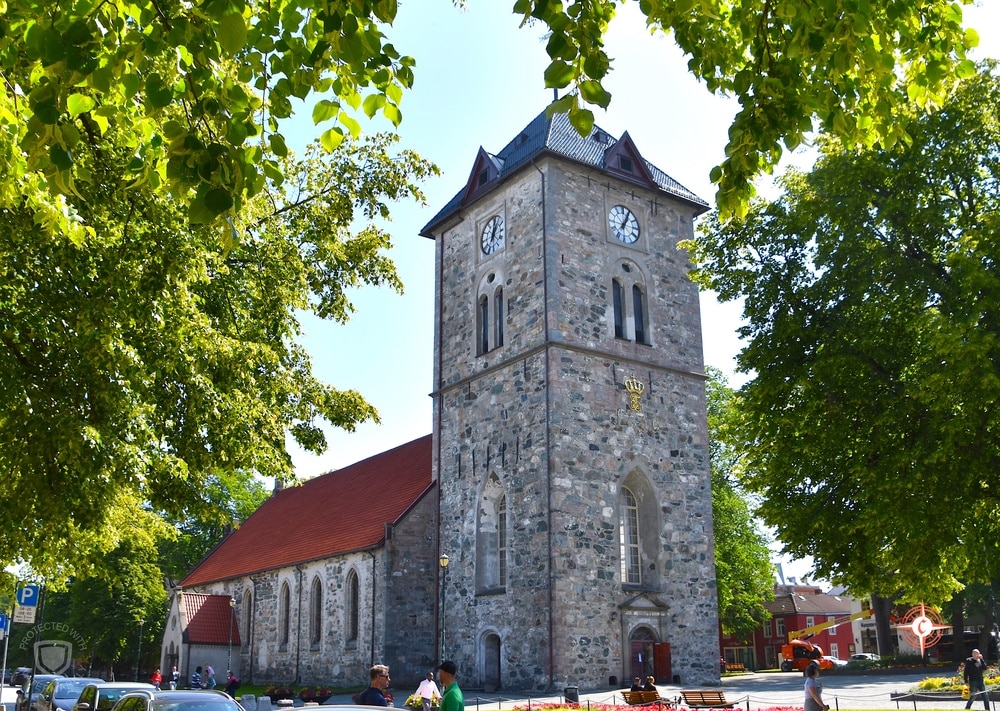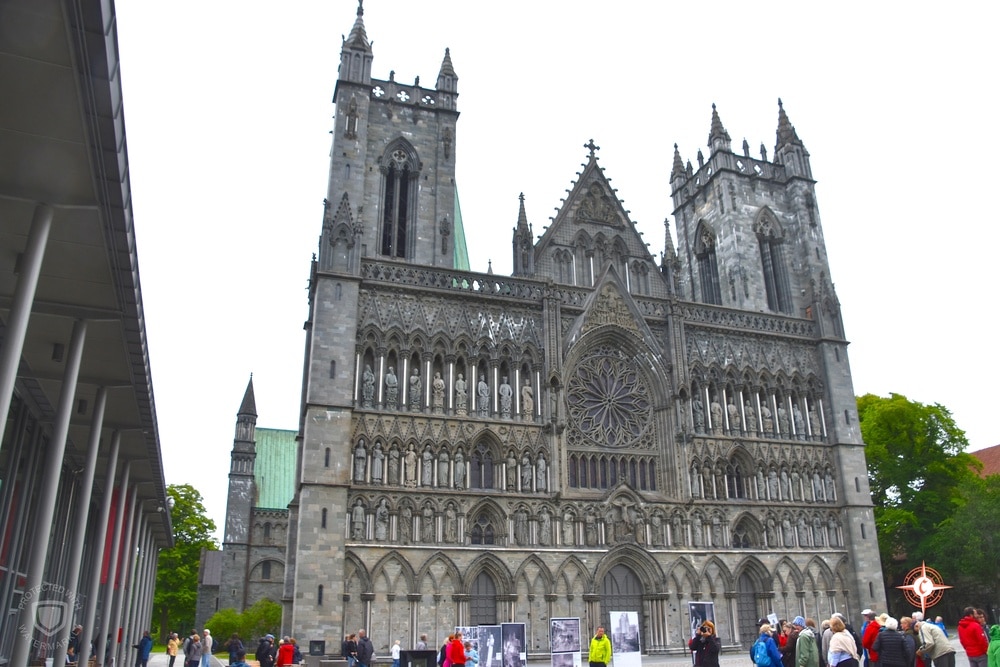In the fifteenth century, when Norway was part of the Kalmar Union with Denmark and Sweden, Kalmar monarchs chose Nidaros Cathedral for their coronation. Reformation and the expulsion of Catholic clerics in the sixteenth century did not end Nidaros tradition. The cathedral became a Lutheran cathedral. The tradition of Nidaros Cathedral as the choice of coronation ceremonies for kings and queens of Norway continues today. The most recent was the 1991 coronation of King Harald V and Queen Sonja. Lutheran monarchs of the sixteenth century, bothered by the continual flow of Catholic pilgrims on the Way of St. Olav, ordered that the saint’s shrine be buried and all place indication erased.
Norwegians, never lacking a sense of humor, have their own version of the popular game; Where is Waldo? They have never stopped looking for St. Olav beneath the floor of Nidaros Cathedral. By 1897, the 900th anniversary of the founding of the city, the search went into high gear, presenting a headache to the controlling Swedish government. Eight years later, in 1905, Sweden proclaimed Norway independent.



Norwegians continued the search for Olav in anticipation of the 900th anniversary of the Battle of Stiklestad in 1930, the mortal moment for the saint. The search accumulated a popular following for the Holy Grail of Norwegian history.
Extensive archaeology in the Octagon and adjoining chapel areas have disclosed Lutheran era burials commingled with earlier Catholic burials. A couple were candidates for the era of Olav. The excavations found the well of healing water, which legend recalled as springing forth at the burial place of warrior Olav, contributing to the miracles necessary for candidacy for sainthood.


If a likely burial of St. Olav is excavated, it can be authenticated by a known relic of St. Olav, that of his leg bone, which is in the Danish National Museum in Copenhagen. The bone was a gift to King Christian II after his coronation in 1514. Among other attributes including the age range of 1030, the bone shows evidence of injury in battle consistent with those sustained by Olav. A specimen of DNA was taken from the bone.

As the millennium anniversary of the death of St. Olav approaches in 2030, the Norwegian government has appropriated funds to find St. Olav. The effort has yielded the location of the Church of St. Clements, begun by Olav in 1015, and one of his posthumous homes. The Nidaros Cathedral Restoration Workshop continues their scholarly participation in the search, while they continue to restore the cathedral. Trondheim is a leading center of medieval art restoration.
Across the Nidelva River on the Gamle Bybrn, the Old City Bridge, built in 1861, is the Bakklandet district. Saved from the Urban Renewal movement of the 1990s, the neighborhood is now a favorite of visitors and photographers. The city is a treasure of Norwegian history, home to the icon of power in medieval Norway, the Nidaros Cathedral, quite possibly still the final resting place of the patron saint of Norway, St. Olav.
If you want to learn more about Sherry Hutt’s adventures check out one of her books on Amazon.com







